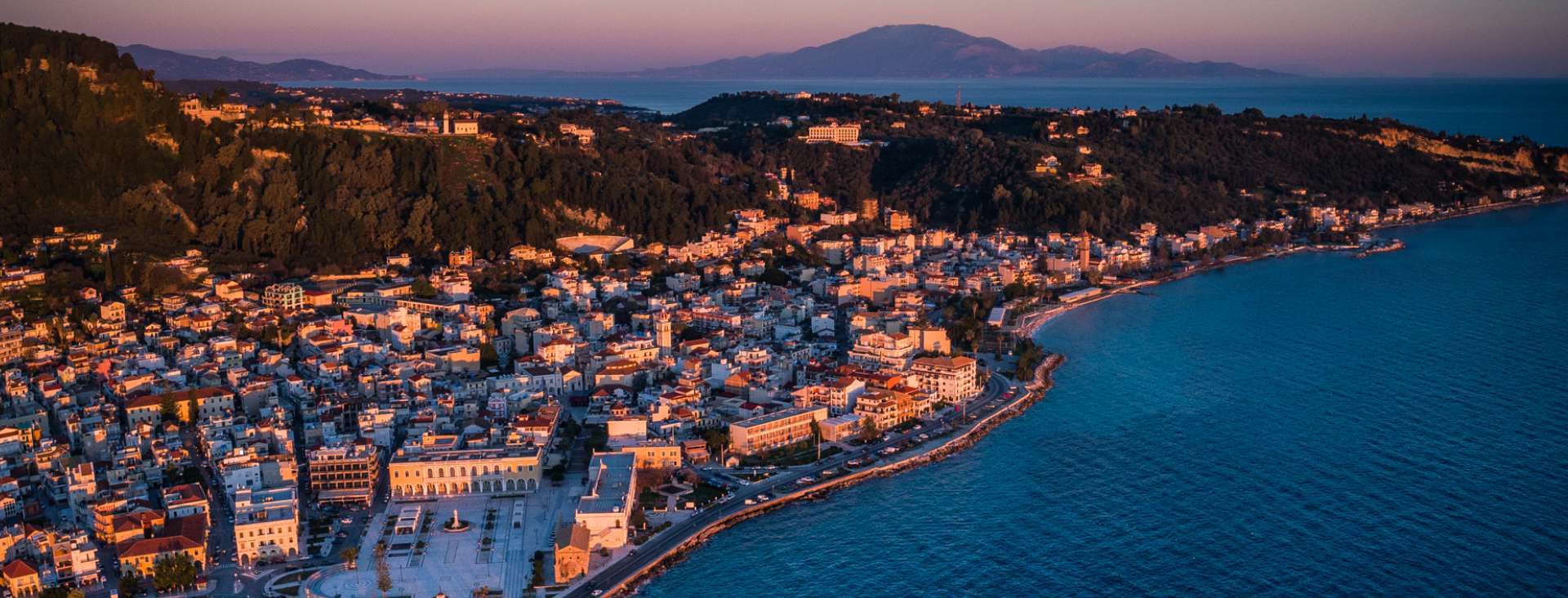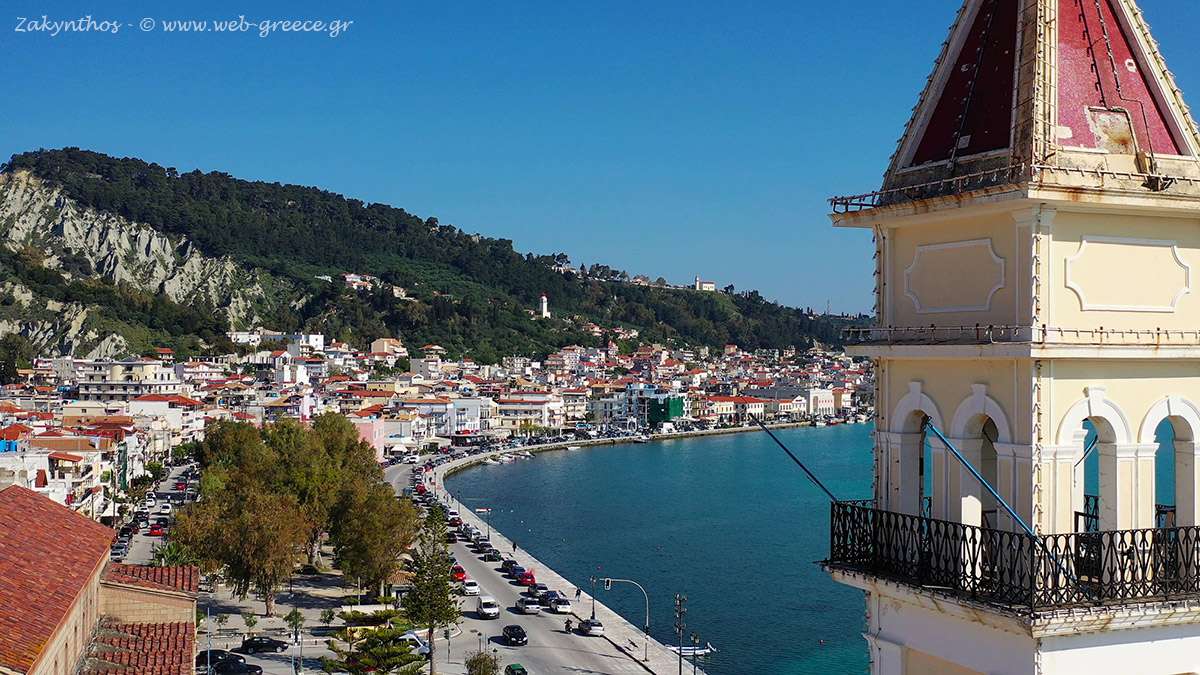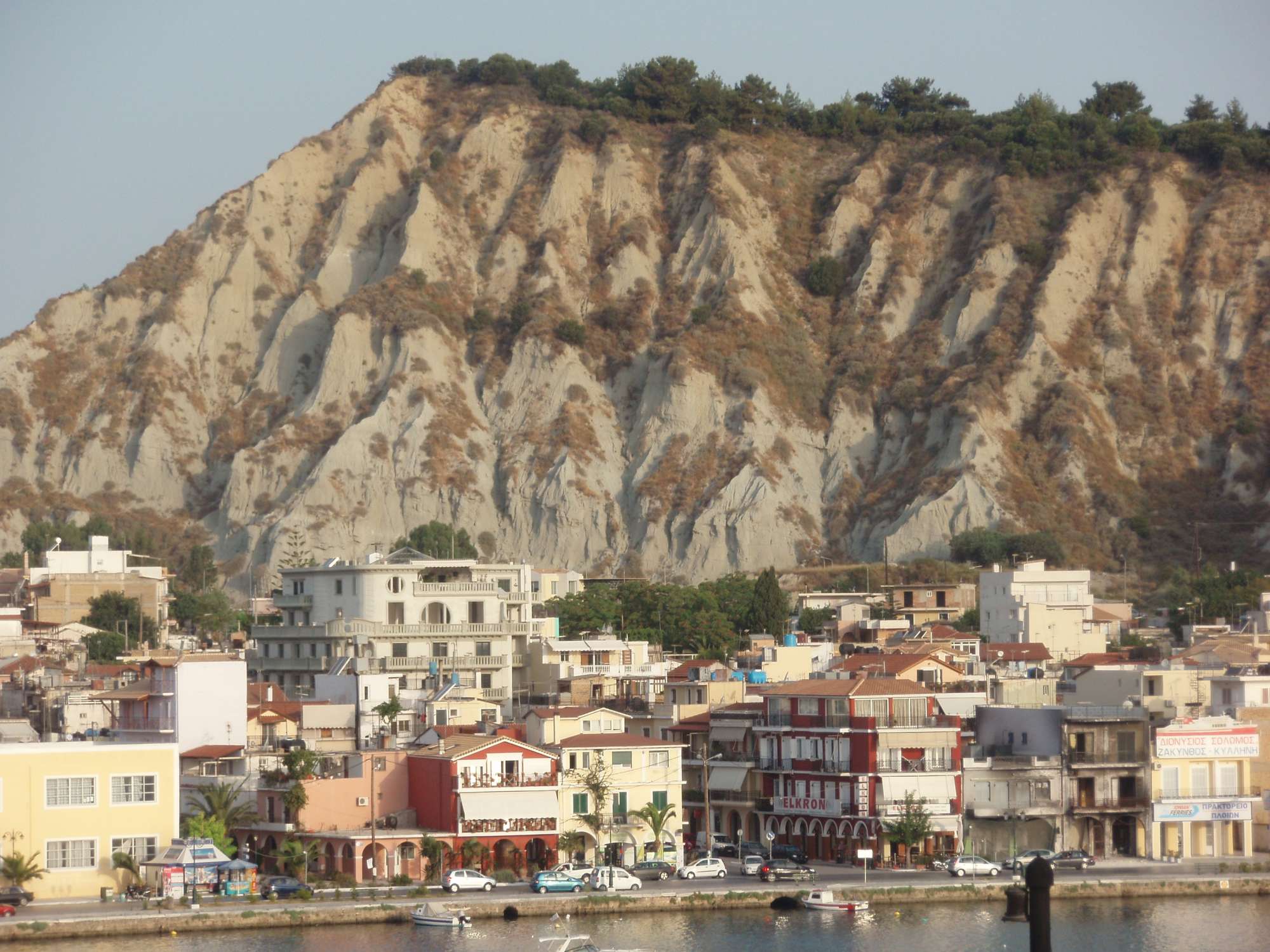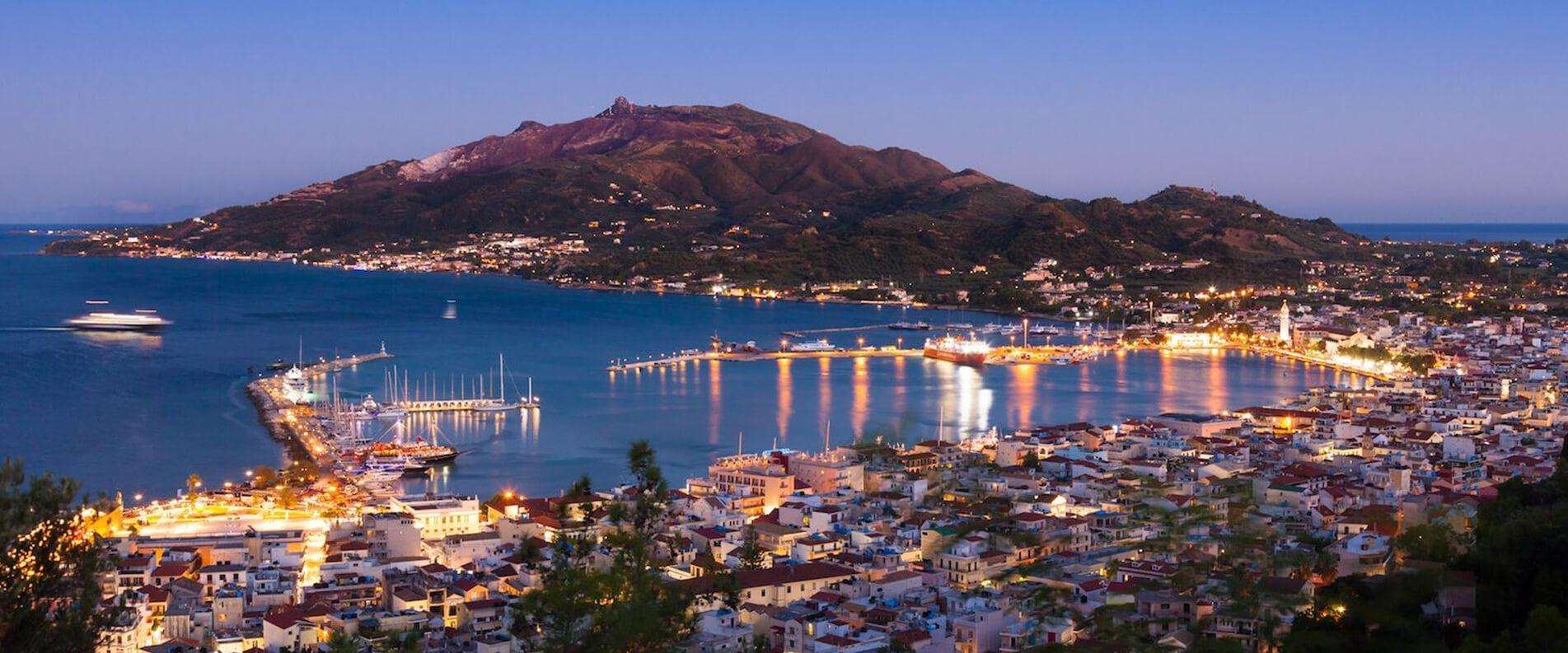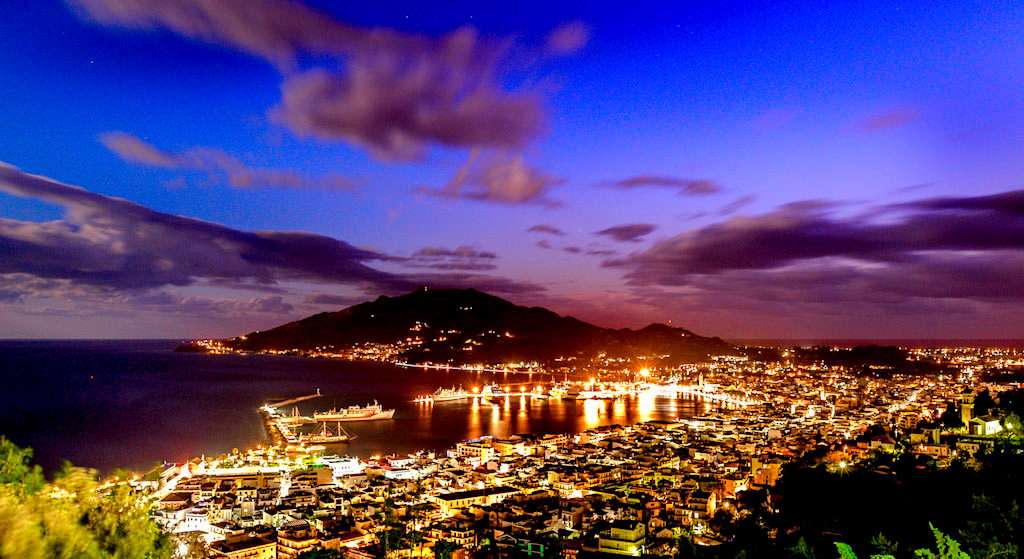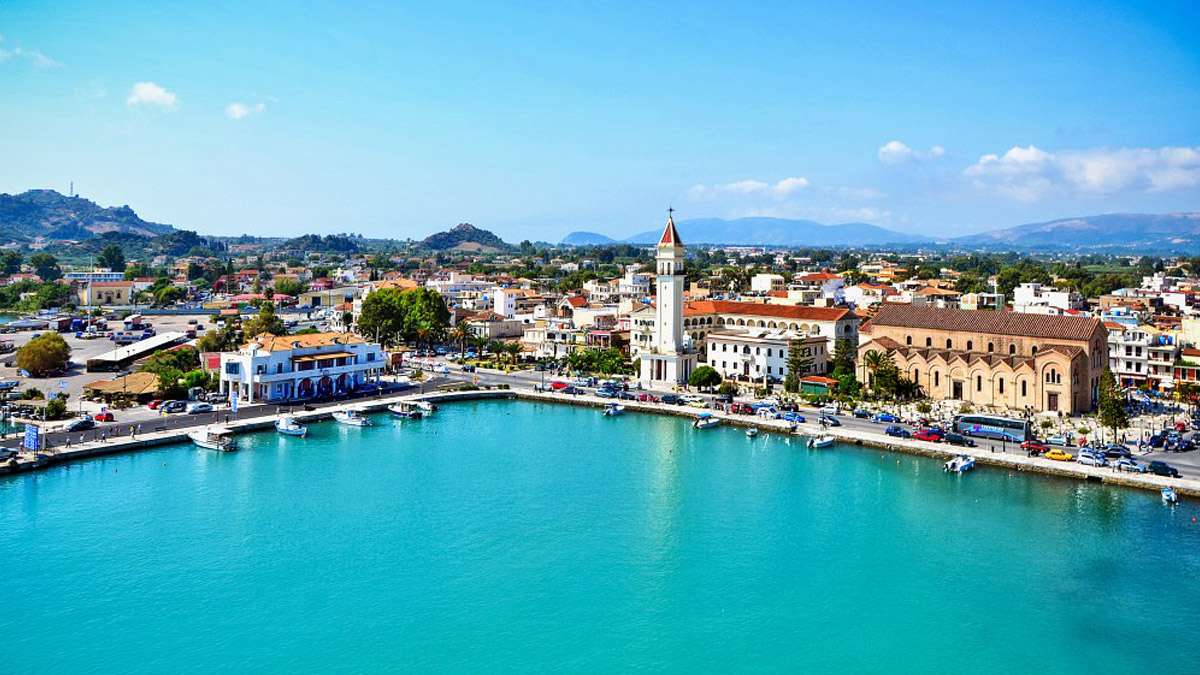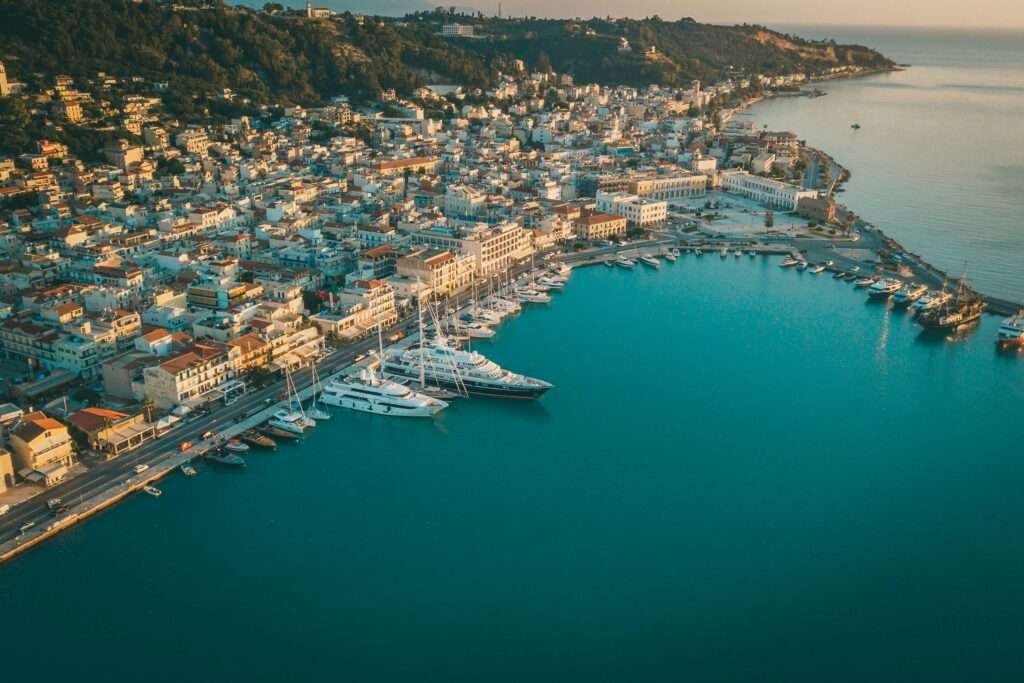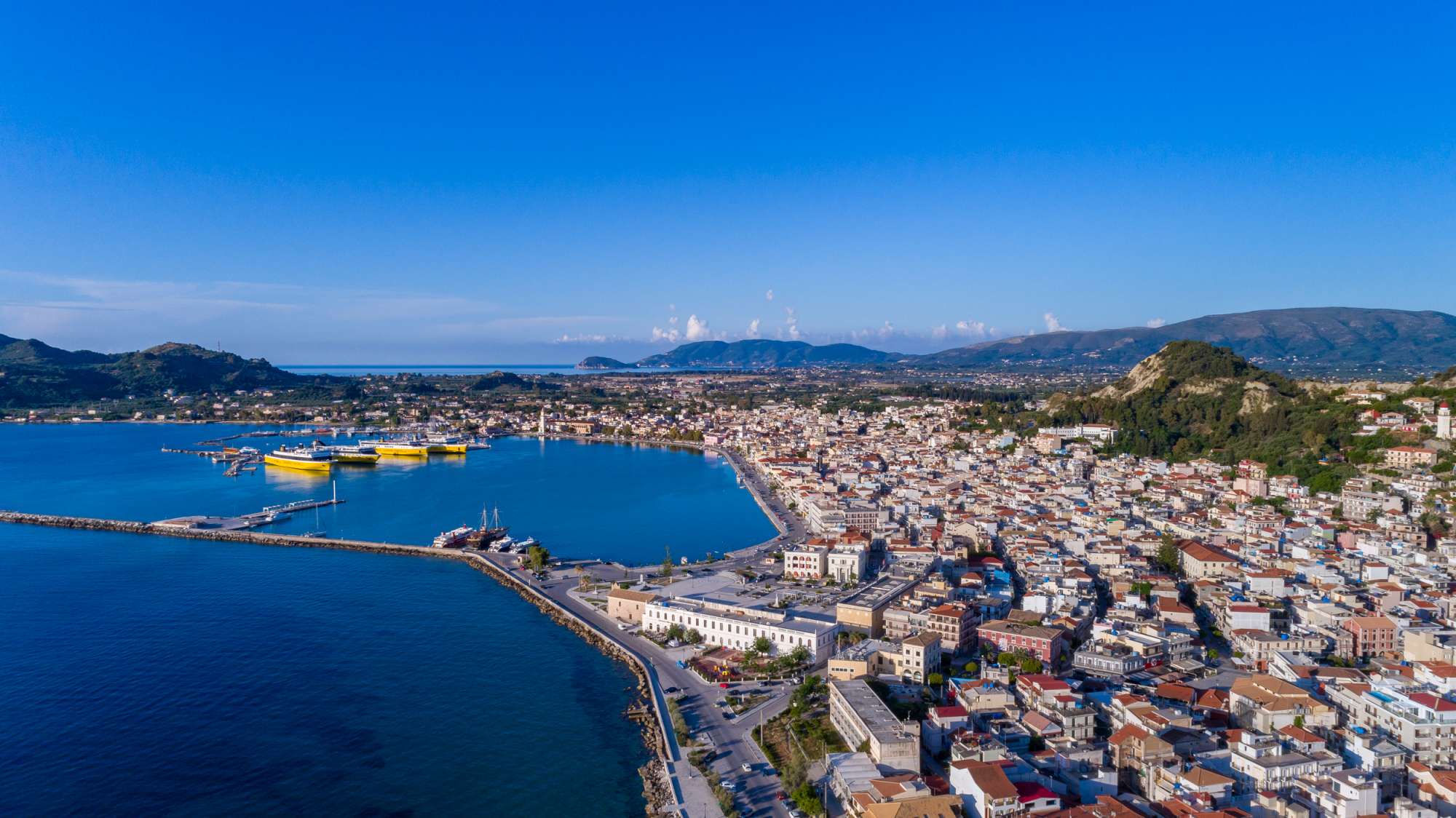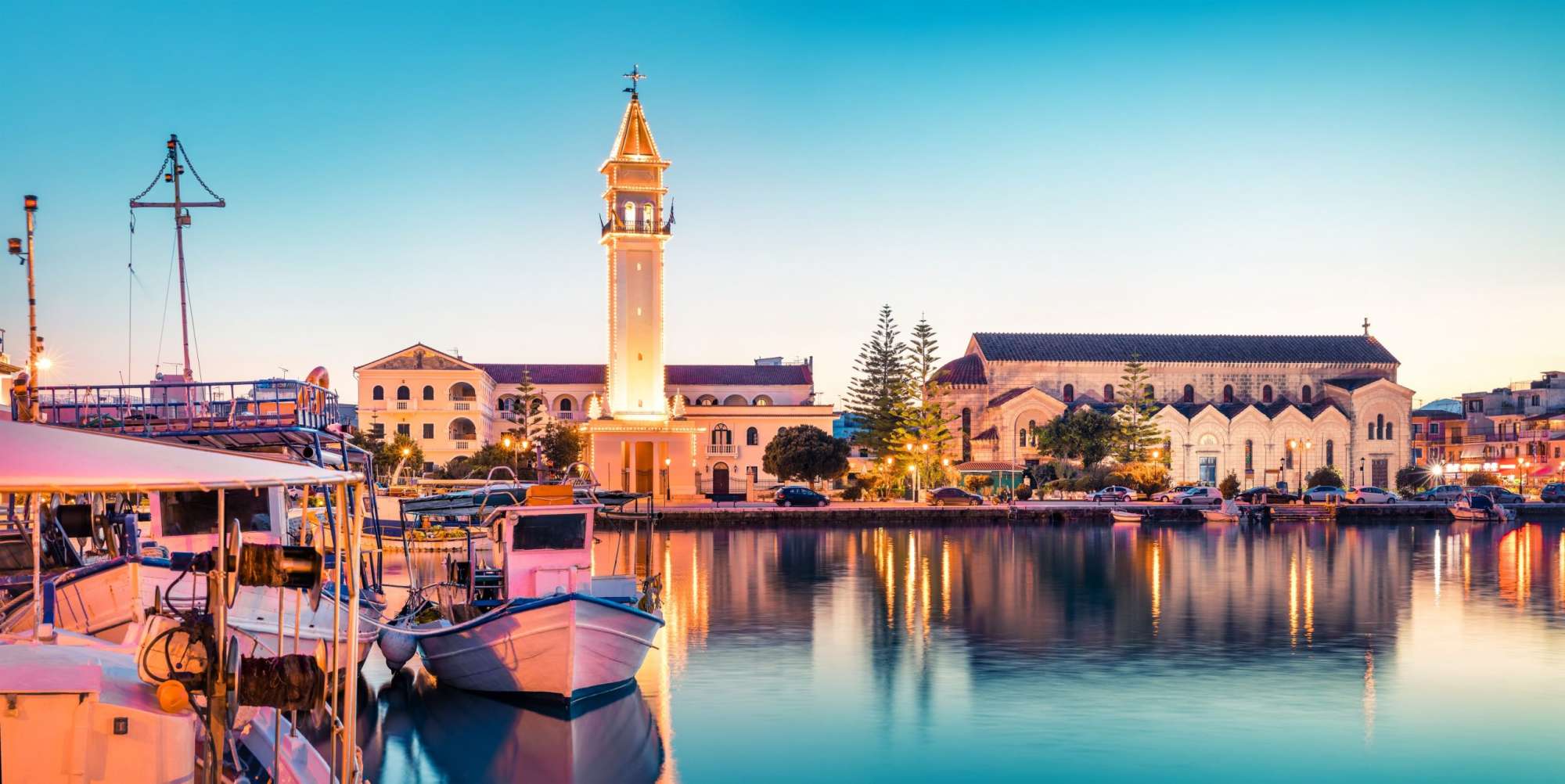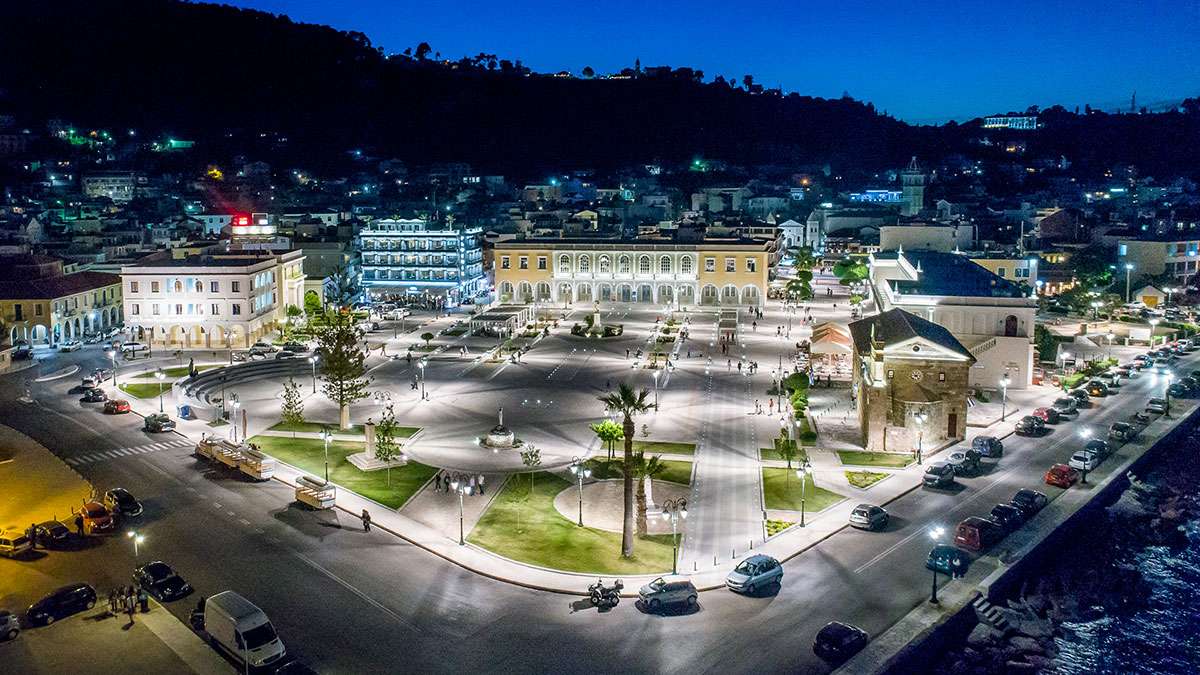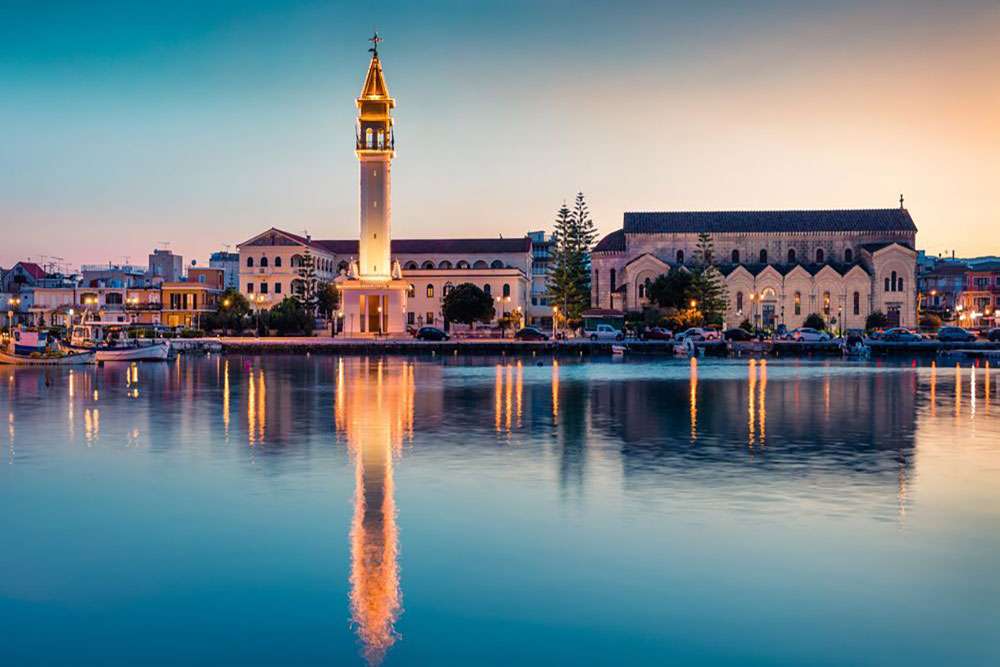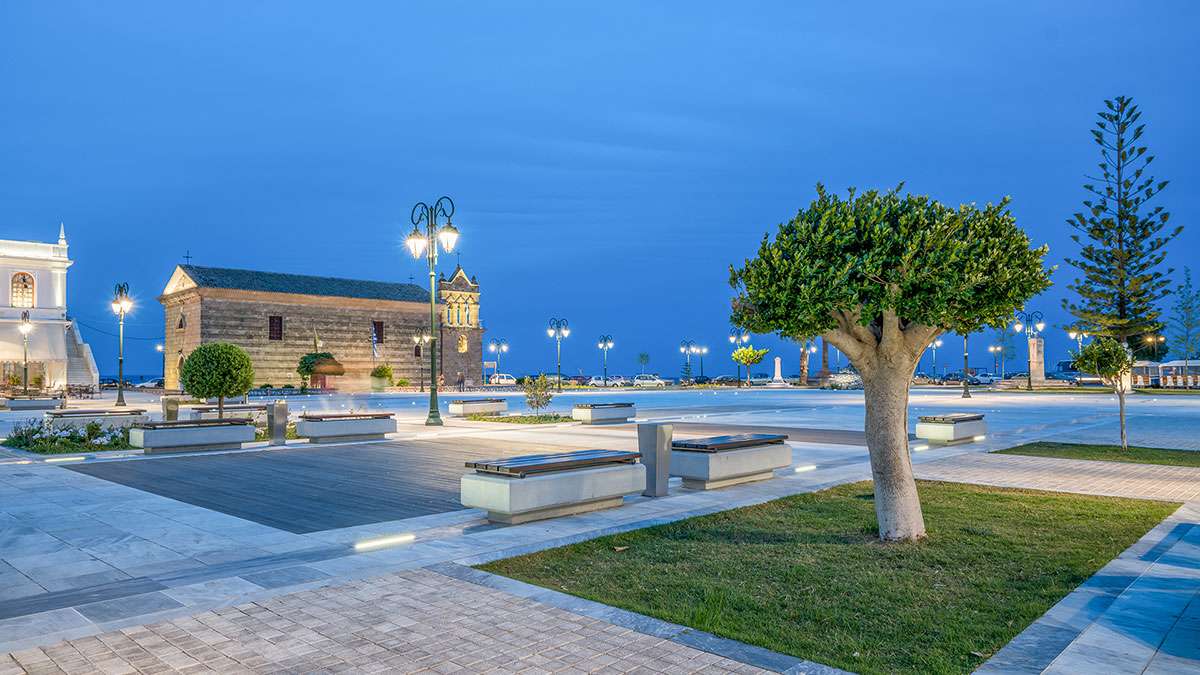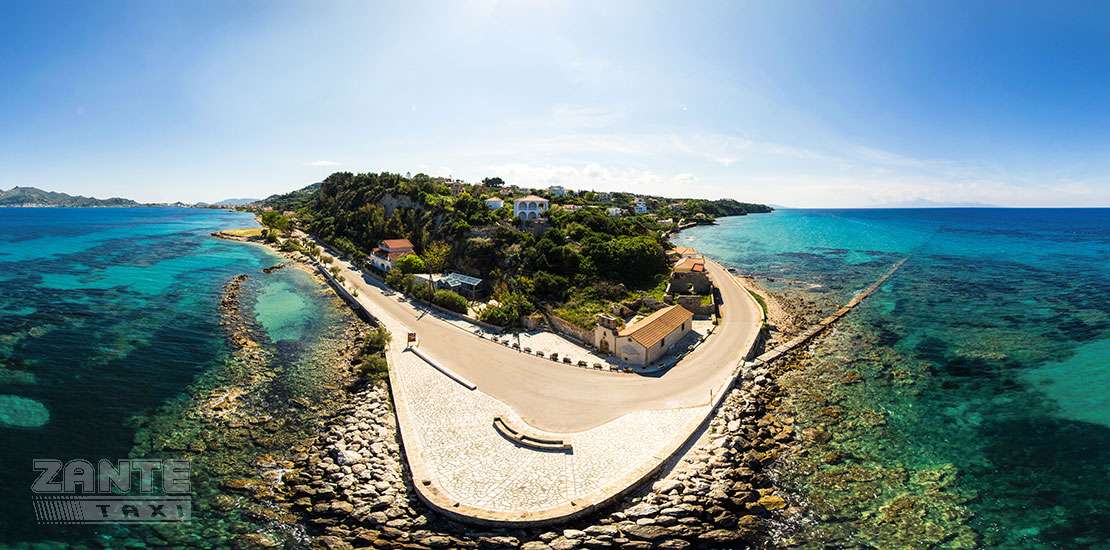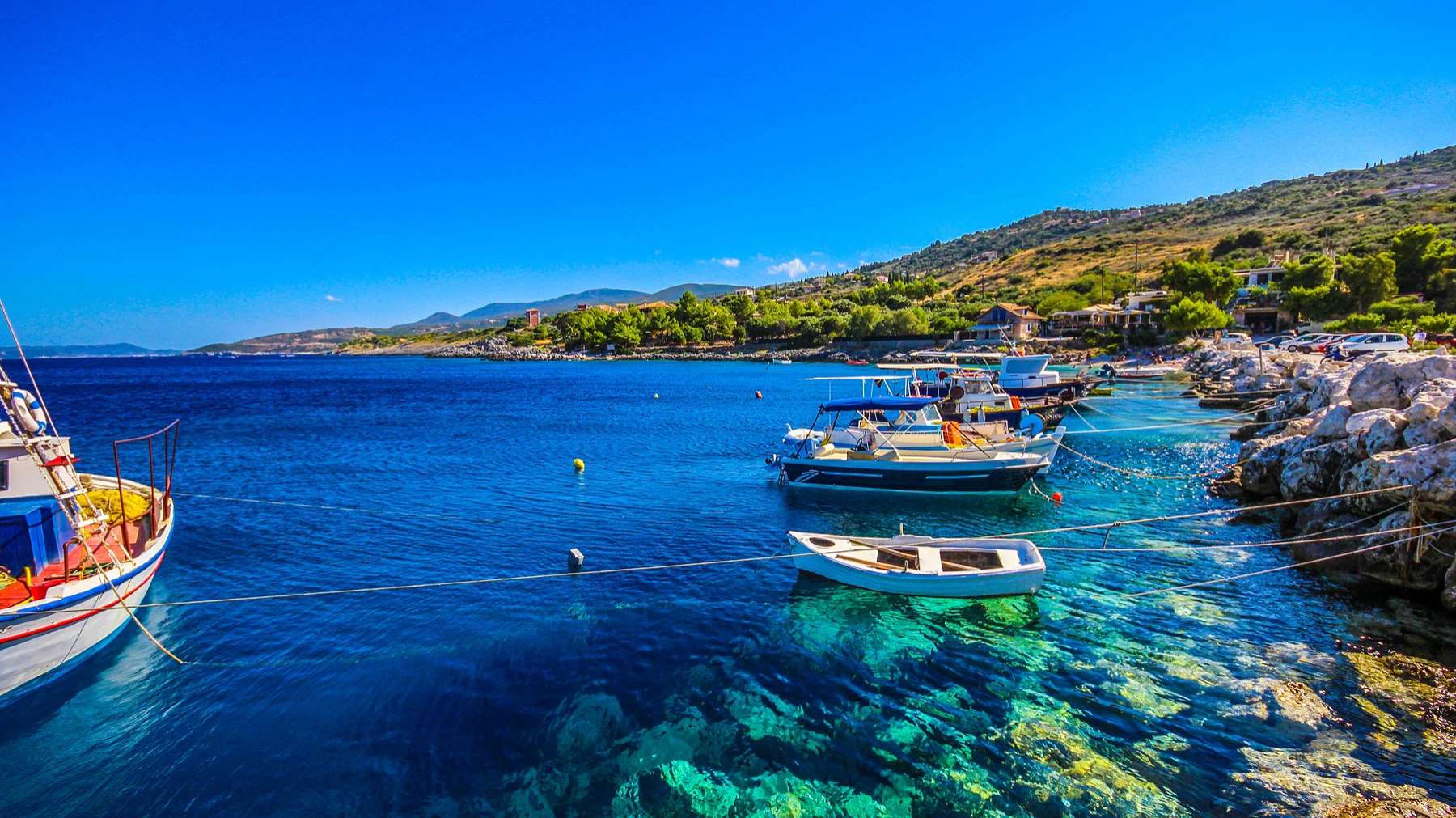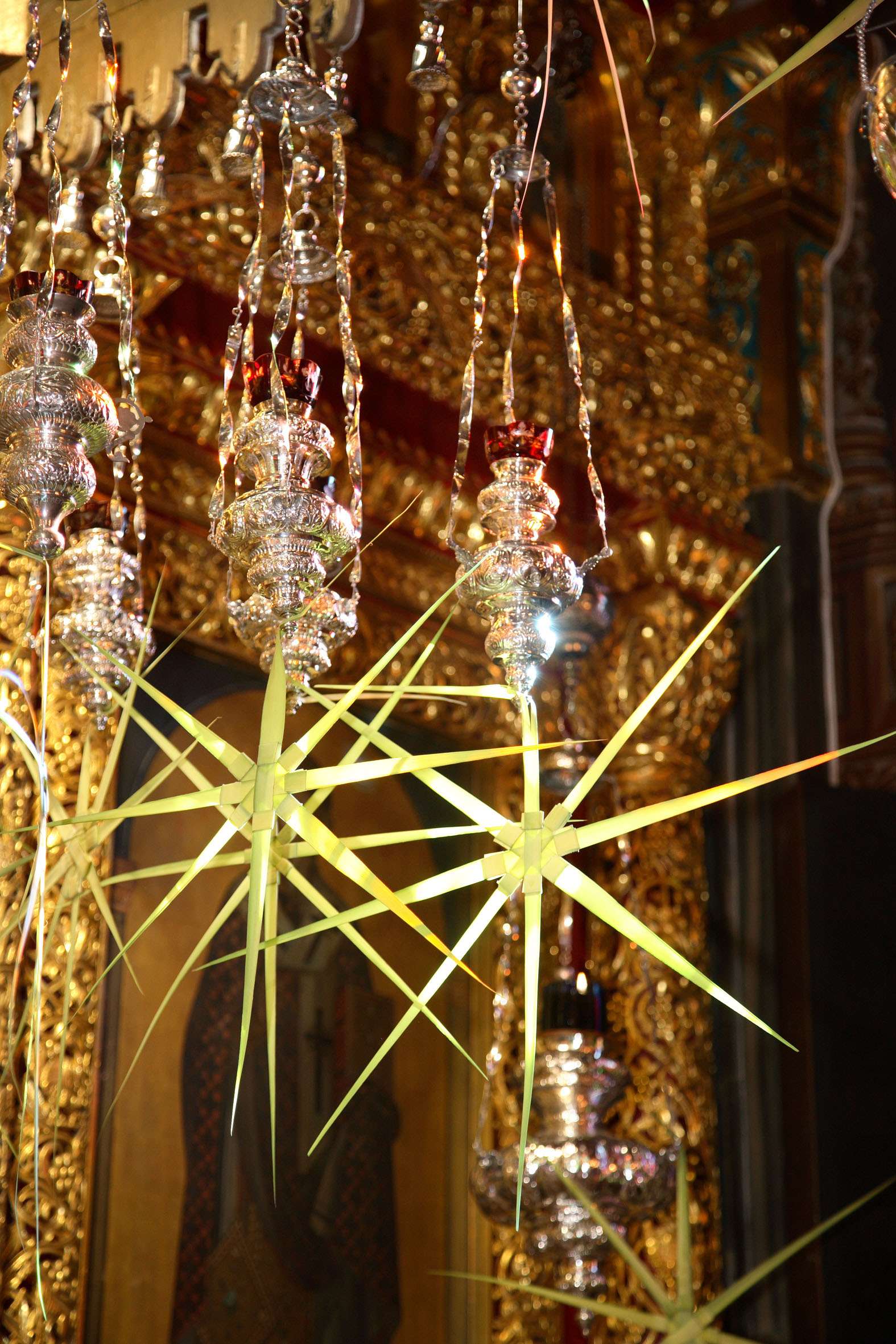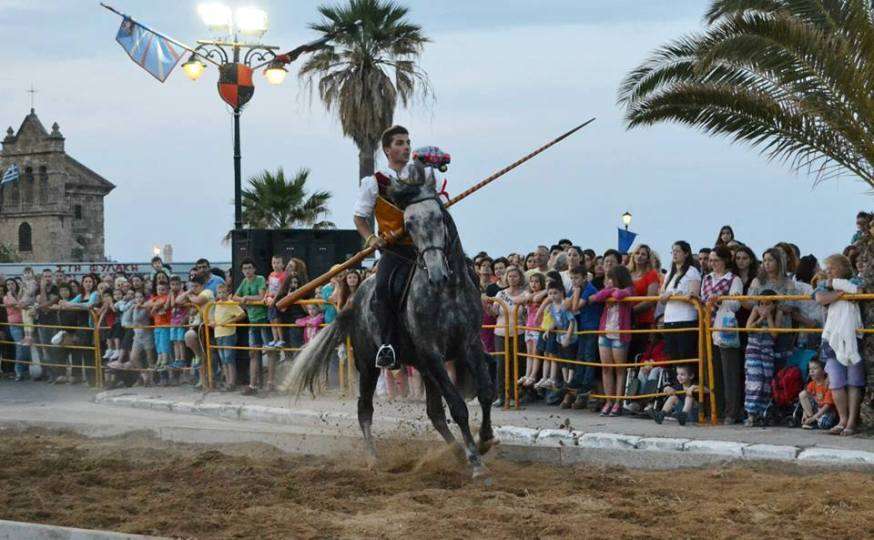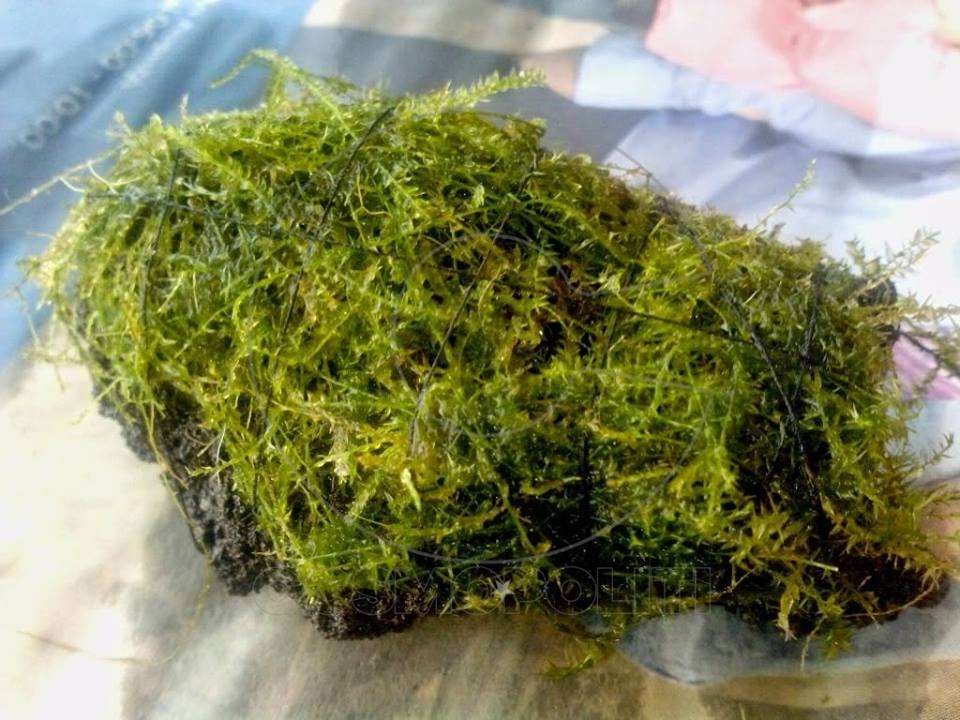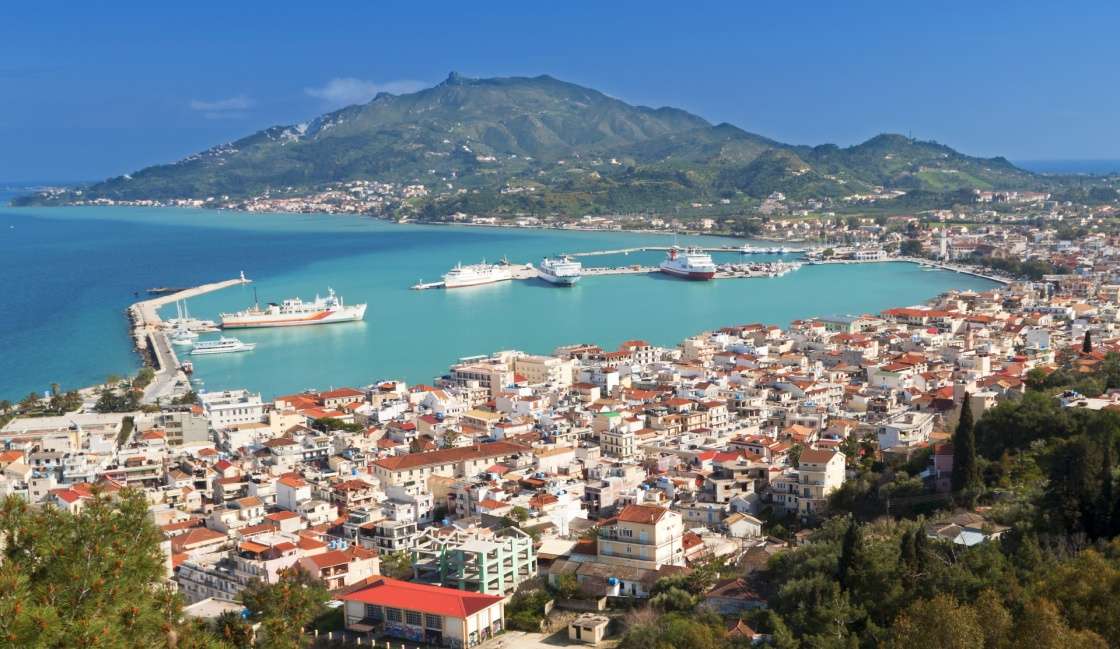
Zakynthos
The city of Zakynthos is built on the South-East coast of the island. It is the only city of the island and its capital, its country. According to the 2001 census, it has 11,254 inhabitants. The final current shape of the city, formed, with continuous embankments, slowly, over the centuries from the Middle Ages to the 20th century, is elongated, with a direction approximately from North to South. Its total length is 2,500 m, while its width ranges from 100 to 400 m. A characteristic of the city's architecture – a remnant of the old Zakynthos that was lost in 1953 – are the wide porticoes-arches in the city's most central streets, Rouga Square (Alexandrou Roma and 21st of May) and Strata Marina (Konstantinou Lombardou). In the town of Zakythos, it is worth visiting: The Post-Byzantine Museum of Zakynthos, in the Center of the City, in Solomos Square. It houses works of art of the Eptanesian School and is one of the most important Greek museums of the Post-Byzantine era.
The Museum of Solomos and Epiphanes of Zakynthos in the Center of the city, in Agios Markos Square. It hosts the tombs of Solomos and Kalvos, manuscripts of the National Poet and personal belongings of many prominent Zakynthians (Xenopoulos, Romas, etc.).
The Roma House - Museum, on the beach, which houses relics from the 15th to the 20th century that are directly related to the modern history of Greece as well as a library with more than 10,000 rare publications, manuscripts, maps and engravings.
The Grigori Xenopoulos Museum, which is housed in the author's house on the street of the same name and includes the author's personal items, his manuscripts, editions of his works, issues of the magazine "The Variety of Children", etc.
The Historical Archive, housed in the building of the Spiritual Center, in the Center of the City, in Solomos Square.
The Public Library of Zakynthos, with invaluable pre-earthquake volumes of books, newspapers and publications, housed in the building of the Spiritual Center, in the Center of the City, in Solomos Square.
The Services of the National Marine Park of Zakynthos, in the building of the Little Commandant.
The Church of Agios Dionysios, the most famous of Zakynthos. It is located on the South side of the city and marks its beach. It was built in 1925 on the foundations of an older one, from the beginning of the 19th century, and on plans by Professor A. Orlando. It is a three-aisled Basilica and inside it is kept the shroud of Agios Dionysios in a silver urn, the work of Diamantis Bafa. The temple is decorated with works by Koutouzis, one of the most brilliant representatives of the Eptanesian School of painting.
Agios Nikolaos of Molos. It was founded in 1561 by the "sailors' guild" on a small island, which later, during the development of the city of Agialos, was joined to the mainland, when the embankments were made for the expansion of the city. The church and its bell tower (which used to have a lighthouse for sailors) have been restored, exactly as it was before the earthquakes. The style of the church is a single-aisled Basilica and is lined with stone.
The Catholic Church of Agios Markos, in the homonymous Square of the 17th century, paved with old Maltese tiles. The church was founded in 1518. Today, it lacks its old beauty but maintains its pre-seismic physiognomy externally. Saint Mark's Square was the social center of the nobles of Zakynthos.
The Temple of "Our Lady of Angels". It was built in 1687 by the "guild of notaries" and was restored after the earthquakes in the exact same location and with the same materials and architecture as it was then. It is externally decorated with reliefs carved on the stone walls. Inside, it has a beautiful wood-carved iconostasis and images of Doxaras and others.
The "Panagia faneromeni". The new church was built after the earthquakes of 1953, trying to imitate the old magnificent temple that was destroyed along with most of its treasures. The old church of Faneromeni, from the 15th century, was one of the most beautiful churches in Greece and one of the richest in works of art by the greatest representatives of the Eptanesian School. The northern face of Faneromeni is the most typical example of a main long face of a temple. It was and is built of hewn stone. The church's magnificent bell tower has also been rebuilt and recalls something of its former grandeur. Faneromeni Square, in front of the church, was the popular Square of the city.
The Church of Agios Charalambos. It was built in 1729, following the decree of the Forecaster Mark. Dolphinou, attributing popular gratitude to the hieromartyr Charalambos for saving the city from the plague he instigated in 1728. Today, the church, which was demolished in 1953, has been built according to the standards of its pre-earthquake form and includes ecclesiastical works by famous and anonymous Zakynthian painters of the 18th century. Inside the church one can admire the "Litany of the sacred bone" of Agios Charalambos, the work of Ioannis Korais or Kastriotis, from 1756.
The picturesque church of Panagia Krioneritissa. The small church of the 18th century with remarkable icons of the time is located at the North end of the city. It belonged to the cooper's guild. Its bell tower has two arches, one above and one below, and serves as an entrance. Right above the church there is a lighthouse built in 1866.
The Virgin Pikridiotissa, located on the hill to the West of the city. It was named after the priest and notary Stefanos Pikridis, who lived in the area in the 16th century. On the platform of the present church, built after 1953, there is a Doric column, said to have been found together with a statue of Bacchus. It has a peculiar (oriental type) bell tower that dominates over the city of Zakynthos. From the eastern side of the bell tower, Theodoros Kolokotronis, seeing the mountains of the enslaved Moria, decided to start his revolutionary march for the national liberation struggle.
The Church of St. George of the "Latins" or "Filikon" (Friendly), located on the road that goes up from the city to Bochali, 300 meters above St. Mark's Square. It was built in the 17th century by the noble George Latinos. In this humble little church, the initiates of the Society of "Philiki etairia" (Society of Friends) took their oath. Here Kolokotronis, Plaputas Anagnostaras and others swore to be Friends. In the chapel there is a list of those sworn in to the Philiki Etairia. The icon on which the Friends swore is kept in Zakynthos Museum.

St Dionysios celebration
Twice a year the people of Zakynthos honor their Protector Agios Dionysios. The first mid-year celebration takes place on August 24, commemorating the Moving of Saint Dionysios Holy body from the Strofades Islands to Zakynthos, which occurred in 1717, and the second on December 17, when the Assumption of the Saint is commemorated, which occurred in 1622. Every year, on August 16, according to custom, at sunset, outside the church of Agios, 12 cannons are fired, which symbolize the 12 months of the year, but also the days that the protector saint of Zakynthos remains. "at his door". It is the notification that on the 24th of the month, in one week, the great celebration of the Protector Saint of the island, Agios Dionysios, will come. Both of these liturgical gatherings receive special glamor every year and last three days each (August 23 – 26 and December 16 – 19).
Easter
Easter in Zakynthos is celebrated in a special way, and special local customs make the celebration unique. From the speakers of the churches, the polyphonic church music of Heptaness overflows, which spreads in the city of Zakynthos and also in every village, and makes the locals and visitors feel the devoutness of the days. The service of the Epitaph begins at 02:00 in the morning of Holy Saturday and its procession around 04:00, while the return to the church around 05:30 in the morning and then the first Resurrection takes place. It is then that the "Gloria" custom takes place in memory of the glory of Christ after the Resurrection and hundreds of pitchers are broken by the faithful in St. Mark's Square, as the first manifestation of joy for the resurrection event.
Giostra
The Giostra of Zakynthos is one of the oldest events on the island and was originally held during the Zakynthos carnival. In recent years, held during the three days of the Holy Spirit and missions from Greece, mainly the Ionian Islands, but also European countries, with a similar cultural tradition, participate on it. It features spectacular horse races, whose riders compete with poles and the winner wins, among other things, his chosen Ladyship!
The custom of the Malliaris
One of the customs of Zakynthos is that of "Malliari" (hairy stone), a stone that brings good luck for the whole year. On the evening of the last day of July and ahead of Lent on the fifteenth of August, the people of Zakynthos gather at the plateau of the protector saint of Zakynthos, Agios Dionysios, waiting for the clock to strike twelve midnight. As soon as the day changes and the 1st of August arrives, the bell tower, which will mark the arrival of Lent, will give the signal to the people of Zakynthos, to take off their shoes, lift their trousers and enter the sea, “to catch the malliari”, a stone on which algae has grown. They retrieve it as a trophy, bring it home and place it under the bed to bring them good luck for the whole year. On this evening, the Municipality of Zakynthos organizes a celebration with live music from bands and choirs, wine, traditional dishes, barcaroles and Zakynthian songs.

